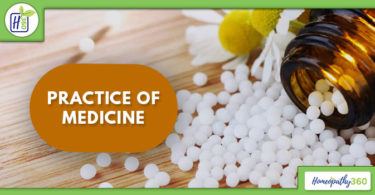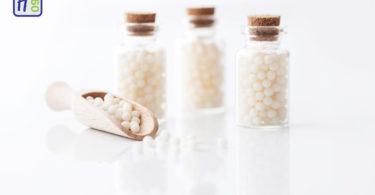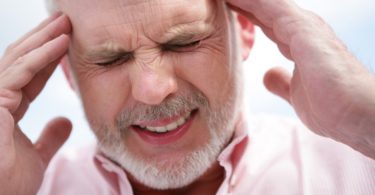Authors:
Dr. Ashok Yadav, HOD Dept. Of Practice of Medicine (Hom.) Dr. M.P.K. Homoeopathic Medical College, Hospital and Research Center. Homoeopathy University, Jaipur.
Dr. Bhupendra Arya , MD Scholar, Department of Practice of Medicine (Hom.) , Dr. M.P.K Homoeopathic Medical College, a constituent college of Homoeopathy University, Jaipur.
Dr. Garima Choudhary , MD Scholar, Department of Practice of Medicine (Hom.) , Dr. M.P.K Homoeopathic Medical College, a constituent college of Homoeopathy University, Jaipur.
Dr. Iitika Khatri, MD Scholar, Department of Materia Medica (Hom.) , Dr. M.P.K Homoeopathic Medical College, a constituent college of Homoeopathy University, Jaipur.
ABSTRACT
Ringworm, or tinea, is the name given to inflammatory rashes caused by dermatophytes of the genera microsporum, epidermophyton and trichophyton. These fungi can infect skin, hair and nails. The important clinical patterns are: tinea capitis, tinea corporis, tinea pedis (athlete’s foot), tinea cruris, tinea unguium (Onychomycosis), and tinea barbae. This article provide information about Tinea corporis along with homoeopathic approach by various repertories with miasmatic background .
KEYWORDS: Tinea corporis, homoeopathy,dermatophyte
INTRODUCTION
Tinea corporis is a superficial dermatophyte infection characterized by either inflammatory or non inflammatory lesions on the glabrous skin (i.e., skin regions other than the scalp, groin, palms, and soles). [1]
EPIDEMIOLOGY
According to W.H.O. the prevalance rate of superficial mycotic infection worldwide has been found to be 20-25%.It is more prevalent in tropical and sub tropical countries like India where heat and humidity is high for most parts of the year [2]
The commonest anamorphic genera causing this disease are:
- Trichophyton
- Microsporum
- Epidermophyton
Dermatophytes may infect humans (anthropophilic) or non human mammals (zoophilic), or they may reside primarily in the soil (geophilic).[1]
It has following varients:
1) Majocchi granuloma
This variant of tinea corporis is a fungal infection of the hair, hair follicles, and, often, surrounding dermis. Typically caused by Trichophyton rubrum, it manifests as perifollicular, granulomatous nodules typically in a distinct location, which is the lower two thirds of the leg in females, with an associated granulomatous reaction. Majocchi granuloma often occurs in females who shave their legs.[1]
2) Tinea corporis gladiatorum
This variant is a dermatophyte infection spread by skin-to-skin contact between wrestlers; it often manifests on the head, neck, and arms, which is a distribution consistent with the areas of contact in wrestling.[1]
3) Tinea imbricata
Another variant of tineacorporis, this form is found mainly in Southeast Asia, the South Pacific, Central America, and South America. Tineaimbricata is caused by T concentricumand is recognized clinically by its distinct, scaly plaques arranged in concentric rings.[1]
4) Tinea incognito
This is tinea corporis with an altered classic presentation due to corticosteroid treatment.[1]
Tinea corporis can manifest as follows:
Typically, the lesion begins as an erythematous, scaly plaque that may rapidly worsen. Following central resolution, the lesion may become annular in shape. The inflammation can cause scale, crust, papules, vesicles, and even bullae to develop, especially in the advancing border . Rarely, tinea corporis can present as purpuric macules [1]
Lesions modified by site and named variously as Tinea capitis (scalp), T. faciei (face), T. corporis(trunk), T. cruris (groin), T. pedis (feet), T. manuum(hand), and T. unguium (nails)[3].
PATHOGENESIS :
Dermatophytes grow only on the keratinised layers of the skin and its appendages and do not ordinarily penetrate the living tissues. Fungal products may be responsible for inciting local inflammation. Hypersensitivity to fungus antigens may play a role in pathogenesis and is probably responsible for the sterile vesicular lesions sometimes seen in distant form the ring worm.[4]
Following the incubation period of 1-3 weeks, dermatophytes invade peripherally in a centrifugal pattern. In response to the infection, the active border has an increased epidermal cell proliferation with resultant scaling. This creates a partial defense by way of shedding the infected skin and leaving new, healthy skin central to the advancing lesion. Elimination of dermatophytes is achieved by cell-mediated immunity.
Trichophyton rubrum is a common dermatophyte and, because of its cell wall, is resistant to eradication. This protective barrier contains mannan, which may inhibit cell-mediated immunity, hinder the proliferation of keratinocytes, and enhance the organism’s resistance to the skin’s natural defenses.[1]
INVESTIGATION
Potassium hydroxide (KOH) scraping-Simple, inexpensive, quick, and sensitive test. Samples to be taken depend on the site of infection.
Specimen to be take in tinea corporis- Scales from edge.[5]
MANAGEMENT
Auxillary Mangement– General measures includes keeping area dry, avoiding use of synthetic clothes[4]
Homoeopathy Treatment – Conventional treatment is efficacious to draw away the superficial lesions which mostly reappear after sometime. According to homoeopathy, no eruption is local and is manifestation of internally deranged vital force, hence medicine given, should also act on dynamic level and should be given internally to assist vital force to cure. The selection of Homoeopathic similimum is based on totality of symptoms of the case. Totality is outwardly reflected picture of the internal essence of the disease, that is, of the affection of the vital force”.[6]
As Homeopathy is a system of medicine which works on the dynamic level and the person as a whole and hence it is there by the best form of medicine to treat skin diseases, here the cure is obtained by constitutional treatment and or therapeutics .In homeopathy, one can treat the patient as a whole, by using holistic approach. One can collect lots of information during case taking and by evaluating the symptoms of the patients and repertorization done on those characteristic rubrics of the patients and thus we find a narrow range of similar medicines and similimum can be given after confirmation in materia medica.
RUBRICS mentioned in different repertories for tinea corporis are as follows:
| NAME OF REPERTORY | CHAPTER | RUBRIC |
| Homoeopathic Medical Repertory by Robin Murphy | Clinical | TINEA, ringworm , general[7] |
| Augmented Clinical Synthesis by Frederick Schroyens | Skin | Eruptions – herpetic- circinate[8] |
| A Concise Repertory Of Homoeopathic Medicines by Dr. S.R. Phatake | Eruptions | Herpetic (ringworm)[9] |
| A Synoptic Key of the Materia Medica by Boger | Skin | Fungus growth[10] |
| Repertory of Hering’s Guiding Symptoms Of Our Materia Medica by Calvin B.Knerr | Outer Head Upper Face | Eruptions ,tinea capitis Eruptions , tinea[11] |
| The Concordance Repertory Of Materia Medica by Willim D. Gentry (vol 5) | The Skin | Ringworms[12] |
| Boenninghausen’s Therapeutic Pocket Book by H.A. Roberts and Annie C. Wilson | Skin | Tetter in general[13] |
| Repertory Of The More Characteristic Symptoms Of The Materia Medica by Constantine Lippe | Skin | Ring-worms[14] |
MIASMATIC BACKGROUND of tinea corporis:
| Key words | Psora | Sycosis | Syphilis | Tubercular |
| General | Scratching eruptions are followed by dry scales. Voluptous tickling and itching , which is temporarily relieved by rubbing and scratching. | Circumscribed or circular patches of hyper-pigmentation in different areas of skin. Painful skin eruptions which are localised and /or in circumscribed spots | Eruptions, which are slow to heal, are syphilo-psoric. | Past history of suppression of ringworm. Tinea associated with glandular involvement. |
| Sensation | Burning Pruritis is always associated with psora | Pruritis(of psoric origin) associated with thickening of skin. | Rawness and soreness | Sensation of exhaustion is always associated |
| Modalities Aggravation Amelioration | Itching < late in the evening before midnight and is almost unbearable. From natural discharges such as sweat, reappearance of suppressed skin eruptions. | Eruptions < consumption of meat, humid and rainy weather and from changes in weather gradually. In dry weather , by pressure. | at night, in summer ,from warmth of bed and from warmth in general. After abnormal discharge. | by touch, at night, while thinking of complaints ,after undressing , from milk , greasy and oily foods , from the warmth of bed (syphilitic component) , and after itching. In open air and dry weather. |
| Concomitants | Suppression of tinea directly affects the mind resulting in anxiety , apprehension , and fear of incurable disease. | Suppression of ringworm can result in rheumatism , chronic headaches , stomach complaints and chronic bronchitis. | Suppression affects intellect causing dullness , depression and a lack of enthusiasm. | Suppression affects deeper tissues causing debilitated tubercular states such as fatigue syndromes. |
| Appearance | Skin appears dirty , dry and harsh and becomes more dry with washing. | Small ,reddish , flat vesicular eruptions which are slow to heal and recur during menstrual period. | Ulcerative and destructive appearance of skin. | Oozing of blood from affected area. |
| Colour of eruptions | Not noticeable by colour but thickness of skin. | Eruptions appear in patches or are diffused in different parts. | Copper coloured eruptions which do not heal fast. | Skin is pale with bluish tint.[15] |
REFRENCES
1. Lesher, J. (2017). TineaCorporis. [online] Medscape. Available at: 1. http://emedicine.medscape.com/article/1091473
2. Indian journal of medical microbiology . Vol-33 (2015)
3. Davidson’s principles and practice of medicine 21st edition
4. Panikar textbook of microbiology .7th edition
5.Khanna,N.(2017). Illustrated Synopsis of Dermatology and Sexually Transmitted Diseases. 4th ed
6 .B.K. Sarkar -Hahnemann`s Organon of Medicine.
7. Homoeopathic Medical Repertory by Robin Murphy
8. Augmented Clinical Synthesis by Frederick Schroyens
9. A Concise Repertory Of Homoeopathic Medicines by Dr. S.R. Phatake
10. A Synoptic Key of the Materia Medica by Boger
11. Repertory of Hering’s Guiding Symptoms Of Our Materia Medica by Calvin B.Knerr
12. The Concordance Repertory Of Materia Medica by Willim D. Gentry (vol 5)
13. Boenninghausen’s Therapeutic Pocket Book by H.A. Roberts and Annie C. Wilson
14. Repertory Of The More Characteristic Symptoms Of The Materia Medica by Constantine Lippe
15. Miasmatic prescribing by Dr. Subrata Kumar Banerjea.





